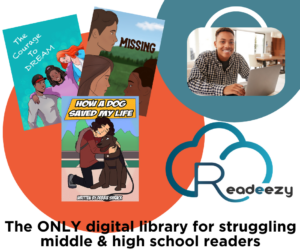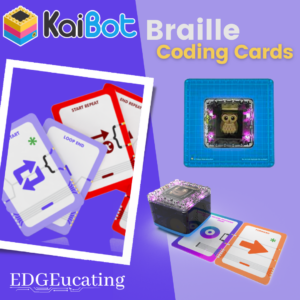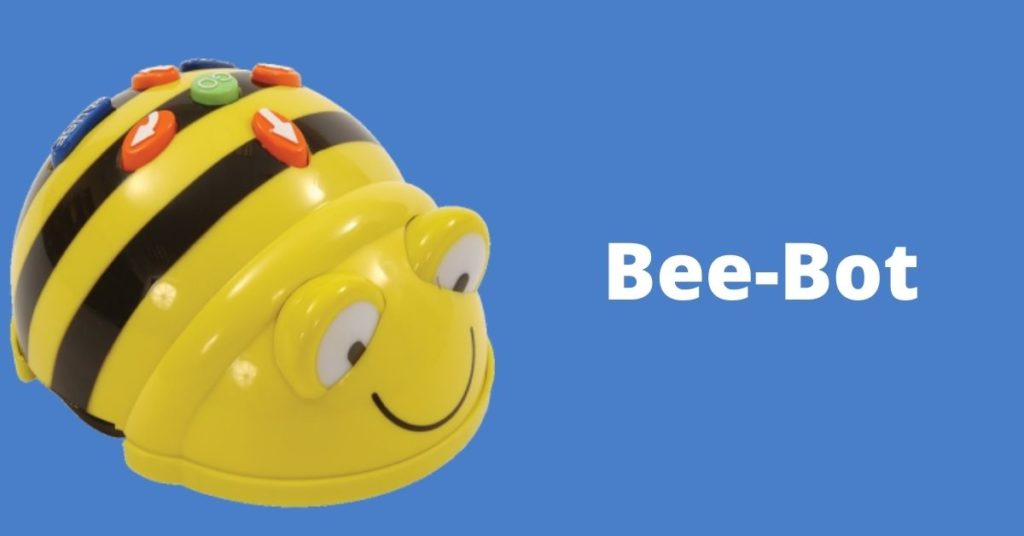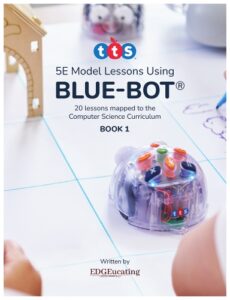Inclusive education is a fundamental principle that strives to create a diverse and equitable learning environment for all students. It is a concept that celebrates differences and provides equal opportunities to students with varying abilities and backgrounds. To achieve this goal, the integration of assistive technology becomes vital. Assistive technology bridges the gaps in education and empowers students by giving them the tools they need to succeed.
We will explore the features and benefits of some assistive technologies that can be used in various subjects and for different needs, such as coding for blind students, reading assistive tools, writing tools, and social-emotional learning for struggling learners. By showcasing real classroom examples, we will see how innovative tools and technologies ensure diversity, equity, and inclusivity for all students.
Coding for Blind Students:
In recent years, there has been a growing focus on teaching coding skills to students. Students who are blind or visually impaired should not be excluded
from this valuable learning opportunity. Tools like KaiBot offer a comprehensive solution to make coding accessible to blind students. This assistive technology utilizes text-to-speech functionality, screen readers, haptic feedback, and adaptive keyboards to enable blind students to engage in coding activities. Educators can ensure equal participation and foster classroom diversity by incorporating this tool into coding lessons.
When discussing assistive technology for visually impaired students, the focus is often on specialized tools like KaiBot. However, it’s essential to recognize that other options can still provide valuable support. Bee-Bot and Blue-Bot are tools that can significantly assist visually impaired students, particularly young learners who may not be wholly blind but still require some assistance.
While Bee-Bot and Blue-Bot may not be as adaptable as KaiBot, they offer a dynamic and interactive learning experience. These programmable robots have function buttons that can be programmed with voice-recorded commands, which are then announced upon execution. This feature allows visually impaired students to navigate the bots and independently engage in learning activities.
For young learners who are visually impaired, Bee-Bot and Blue-Bot can be particularly beneficial. These bots provide a hands-on way for students to learn programming and problem-solving skills, which are essential in today’s digital age. By programming the robots with raised tactile buttons and executed voice-recorded commands, visually impaired students can actively participate in the learning process and explore concepts tactile and engagingly.
The voice-recorded commands also provide audio feedback, which is crucial for visually impaired students to understand the actions of the bots. This feedback helps students grasp cause-and-effect relationships, reinforcing their understanding of programming concepts.
Educators can ensure that visually impaired students have equal access to hands-on learning experiences by incorporating Bee-Bot and Blue-Bot into the classroom. These bots promote inclusion and equity and enable students to develop essential skills that will benefit them academically and in their future careers.
While KaiBot may offer more comprehensive adaptability for visually impaired students, Bee-Bot and Blue-Bot are still valuable tools for assisting visually impaired learners, particularly young ones. By programming voice-recorded commands and providing audio feedback, these bots enable visually impaired students to actively engage in programming activities and promote inclusivity and equity in the classroom.
Check out our Bee-Bot Playbook page linked below to learn more about using Bee-Bot and Blue-Bot. You might also be interested in the new teacher-created Blue-Bot Curriculum.
Reading Assistive Technology:
For students with reading difficulties or disabilities, assistive technology can significantly
impact their academic journey. Readeezy is one such tool that provides customizable features to support struggling readers. It offers text-to-speech functionality, highlighting text as it is read, and the ability to adjust font size and spacing. This assistive technology fosters independent reading and promotes equity by ensuring access to the same information as their peers. By incorporating tools like Readeezy in the classroom, educators can create an inclusive learning environment that caters to all students’ needs.
Math Assistive Technology:
Mathematics can be challenging for some students, and it’s important for educators to provide support and resources to help them succeed. Owlet Math Tools, specifically Glow and Cube, are innovative assistive technologies that can assist students who are struggling with math concepts. These tools promote diversity and equity in the classroom by providing personalized learning experiences for students.
 Glow is an interactive math tool focusing on conceptual understanding and problem-solving skills. It uses visual representations and interactive manipulatives to help students grasp abstract math concepts. For students who struggle with abstract thinking or have difficulty visualizing mathematical concepts, Glow can be a game-changer. With its engaging and interactive interface, Glow allows students to explore mathematical concepts hands-on and visually.
Glow is an interactive math tool focusing on conceptual understanding and problem-solving skills. It uses visual representations and interactive manipulatives to help students grasp abstract math concepts. For students who struggle with abstract thinking or have difficulty visualizing mathematical concepts, Glow can be a game-changer. With its engaging and interactive interface, Glow allows students to explore mathematical concepts hands-on and visually.
On the other hand, Cube is a tool designed to support students in building a solid foundation in numeracy skills. It offers various activities and games that help students develop essential math skills such as counting, number recognition, and basic operations. Cube provides a scaffolded learning experience, allowing students to progress at their own pace and reinforcing their understanding of fundamental math concepts.
Both Glow and Cube offer personalized learning experiences that cater to the diverse needs of students. These assistive technologies can particularly benefit struggling learners requiring additional support and alternative approaches to understanding math concepts. By using Owlet Math Tools, educators can ensure that students who struggle with math are not left behind and have equal opportunities to succeed.
Additionally, Glow and Cube can provide real-time feedback and assessment to help educators monitor student progress and identify areas where additional support may be needed. This data-driven approach allows for targeted instruction and intervention, further promoting equity and ensuring that students receive the necessary support to succeed in math.
CLICK HERE to request demo kits for Glow or Cube.
Social-Emotional Learning (SEL) for Struggling Learners:
Inclusive education encompasses social-emotional learning (SEL) to help struggling learners navigate their emotions and develop social skills. Assistive technology, like SuperDville, promotes SEL through engaging video narratives and interactive activities. This tool helps students understand and manage their emotions, develop empathy, and build positive relationships. By incorporating SEL-focused assistive technology, educators can ensure that struggling learners receive the necessary support to thrive emotionally and socially, promoting equity and inclusivity within the classroom.


Real Classroom Examples:
To understand the true impact of assistive technology in promoting diversity and equity, it is important to explore real classroom examples. Let’s take the example of a visually impaired student who, with the help of KaiBot, could actively engage with coding lessons. Students could program and execute code independently using Braille coding cards and auditory command feedback. This success fostered inclusivity and showcased the talent and potential of students who may have previously been left behind.
In a classroom-based study, Bee-Bot was used as an educational tool to assess its impact on children with Autism Spectrum Disorder (ASD) during a memory game. The study employed a qualitative evaluation of the children’s abilities as well as a quantitative analysis of their verbal and non-verbal communication. The results were promising, revealing that all children demonstrated significant improvement in their verbal communication skills when playing with Bee-Bot. This outcome illustrates that incorporating Bee-Bot into classrooms can be highly beneficial for children with ASD.
Similarly, consider struggling readers who utilized Readeezy to access reading material that was otherwise inaccessible. Students could comprehend and enjoy reading independently by providing customizable features like text-to-speech and adjustable font size. Additionally, students lacking interest in Reading were suddenly excited to take up a novel and interact with its content. These examples demonstrate how assistive technology can level the playing field for students with reading difficulties, ensuring equity and inclusion for all.
The Owlet Math Tools collection results from a 5-year design and research study supported by the National Science Foundation and enhanced by real math teachers in classrooms across the United States. Therefore, classroom examples are numerous for these tools. Specifically, teachers included in a year-long pilot testing program reported high student engagement, conceptual breakthroughs, and ease in using the technology to differentiate learning and promote math talk. A third-grade teacher reported, “They’re willing to say their mistakes out loud, and I guess they feel nobody judges them when they’re doing it like that, as opposed to like if I give another type of assignment.” She went on to add, “I’ll hear more of their thought process and them helping each other out. And the ones that are not necessarily the strongest math students are helping out the ones that in class will typically be stronger. I love seeing that.”
An educator in Texas, cited where she personally witnessed SuperDville improve her students’ self-confidence exponentially. Learning that they were not by themselves when they dealt with different situations, and knowing others have experienced the same thing and gave them faith that things would get better. Additionally, students learned to advocate for themselves and reaffirm themselves when life gets tough.
Conclusion:
Assistive technology is pivotal in ensuring diversity, equity, and inclusivity in education. By utilizing tools like KaiBot, Readeezy, and SuperDville, educators can address the diverse needs of their students, irrespective of their abilities or backgrounds. Through real classroom examples, we have witnessed the positive impact of assistive technology in various subjects, whether it be coding for the blind, reading support, or promoting social-emotional learning. As educators, we are responsible for embracing these innovative tools and technologies to create an inclusive learning environment that celebrates diversity and empowers all students to reach their full potential. By doing so, we can ensure that every student receives an equal opportunity to succeed, regardless of their unique challenges or circumstances.






